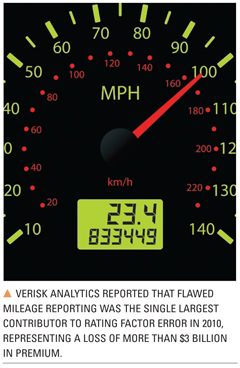 It can be difficult to calculate the extent to which deficiencies in communication and the availability of credible data undermine insurers’ profitability. Auto insurers are acutely aware of this, as many drivers misrepresent annual mileage or fail to report life changes that affect the calculation of premium, and, by extension, the potential risk assumed by the carrier writing the policy.
It can be difficult to calculate the extent to which deficiencies in communication and the availability of credible data undermine insurers’ profitability. Auto insurers are acutely aware of this, as many drivers misrepresent annual mileage or fail to report life changes that affect the calculation of premium, and, by extension, the potential risk assumed by the carrier writing the policy.
So when does misrepresentation meander into “fraud” territory? Moreover, what are these miscalculations really costing the auto insurance industry? Quality Planning’s answer to the latter question is about $15 billion last year.
To arrive at that staggering number—or more specifically $15.4 billion in lost revenue in 2010—the San Francisco, Calif.-based member of Verisk Insurance Solutions group at Verisk Analytics analyzed 5 million auto policies. It then aggregated and summarized its audit results in an annual report intended to quantify rating errors and discrepancies that result in auto insurers undercharging policyholders.
Recommended For You
Want to continue reading?
Become a Free PropertyCasualty360 Digital Reader
Your access to unlimited PropertyCasualty360 content isn’t changing.
Once you are an ALM digital member, you’ll receive:
- Breaking insurance news and analysis, on-site and via our newsletters and custom alerts
- Weekly Insurance Speak podcast featuring exclusive interviews with industry leaders
- Educational webcasts, white papers, and ebooks from industry thought leaders
- Critical converage of the employee benefits and financial advisory markets on our other ALM sites, BenefitsPRO and ThinkAdvisor
Already have an account? Sign In Now
© 2025 ALM Global, LLC, All Rights Reserved. Request academic re-use from www.copyright.com. All other uses, submit a request to [email protected]. For more information visit Asset & Logo Licensing.







